Ferguson Ariva 252Combo User Manual

User manual
52E
102mini
102E
103
202E
203
150Combo
152Combo
250Combo
252Combo
English

WARNING !!!
Ferguson satellite receivers support recording on external hard disk drives (HDDs) and flash memories (pendrives). In all instances, the correct operation of the recording function depends on the type of connected memory! You must read the following limitations.
REMEMBER:
1. In order to use an external USB memory, the memory must support the USB 2.0 standard. To ensure stable recording and playback, you must use a memory with a recording speed of 9.0 MB/s or greater. Slower hard disk drives and flash memories may not function properly, have problems with recording (image jitter), or not function at all!!!
2.Only disks with one basic NTFS or FAT32 partition (we recommend using the NTFS format) will function properly. If you do not have such a format, prepare the disk on your computer before connecting it to the receiver.
3.Highly fragmented or used memories may also not operate smoothly or correctly.
4.External hard disk drives should be autonomously powered, since the built-in USB port is unable to provide sufficient power.
5.Only one of the two USB ports can be used at the same time!
CAUTION
1.Under no circumstances should you disconnect the USB device from the receiver during recording or playback. Disconnecting during operation may cause damage to the receiver and/or flash memory, and to the recorded data.
2.Do not touch the working device (and in particular the USB connector) with wet hands. Risk of electric shock and permanent damage to the receiver!
2
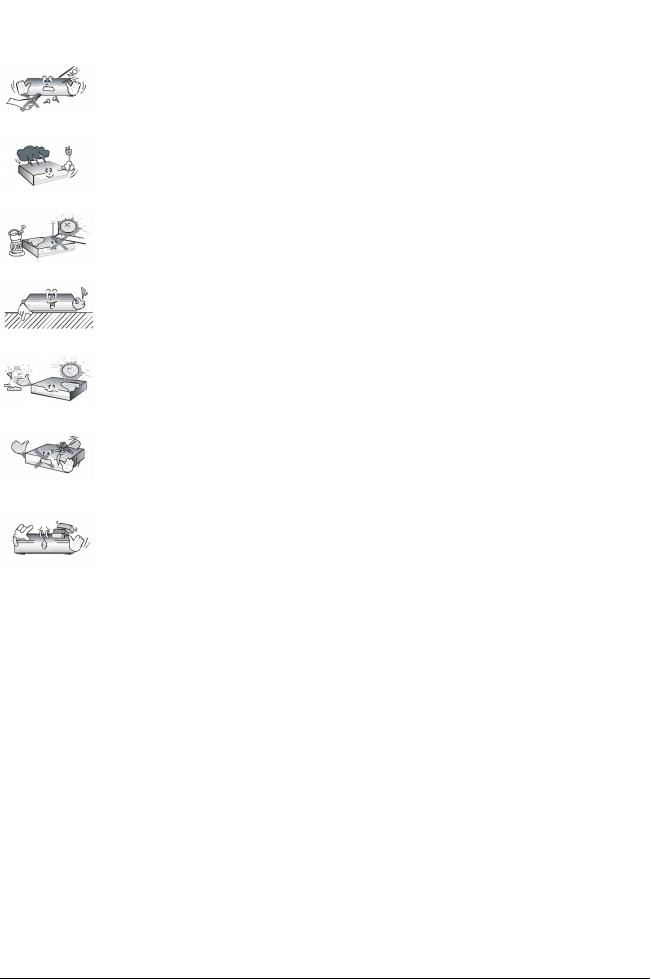
SAFETY MEASURES
We request that you read the instruction manual and recommendations set forward therein. Also remember to correctly position the satellite antenna!
In order to avoid an electric shock, never open the housing. Damage to the warranty seal shall void the warranty.
Disconnect the device from the mains during thunderstorms or when it is not to be used for an extended period of time. Please remember that the warranty does not cover damage to the equipment caused by a lightning strike.
Do not expose the device to direct sunlight. Place it away from sources of heat and humidity. Do not cover ventilation ducts, in order to ensure the correct circulation of air.
Place the device horizontally on a flat, even and stable surface.
If you move the device from a room that is warm to one that is cold (or vice versa), wait at min. 1 hour before connecting it to the mains. Otherwise, problems may arise.
The device should be placed away from vases, bottles, aquariums and other water containers in order to avoid damage. Do not touch the mains plug with your bare hands.
Do not place any objects on the housing of the device. This may cause overheating and reception problems.
Before commencing maintenance or installation work, disconnect the receiver from the mains. Do not clean the receiver with alcohol or liquids containing ammonia. If necessary, clean it with a soft, lint-free cloth wetted with a gentle solution of water and soap.
•Do not connect any cables when the mains plug is in the socket.
•Check the condition of your cables. Damaged cables may cause a fire.
•Please disconnect the receiver from the mains before connecting any cables.
DOWNLOADABLE SOFTWARE
Ferguson has taken every effort to provide users with software updates in order to ensure that the parameters of the satellite television receiver are up to date. Ferguson reserves itself the right to amend, change or modify the software used in the satellite television receiver as it shall choose and without prior notification. The latest version of the software is available on the website http://www.ferguson-digital.eu
3
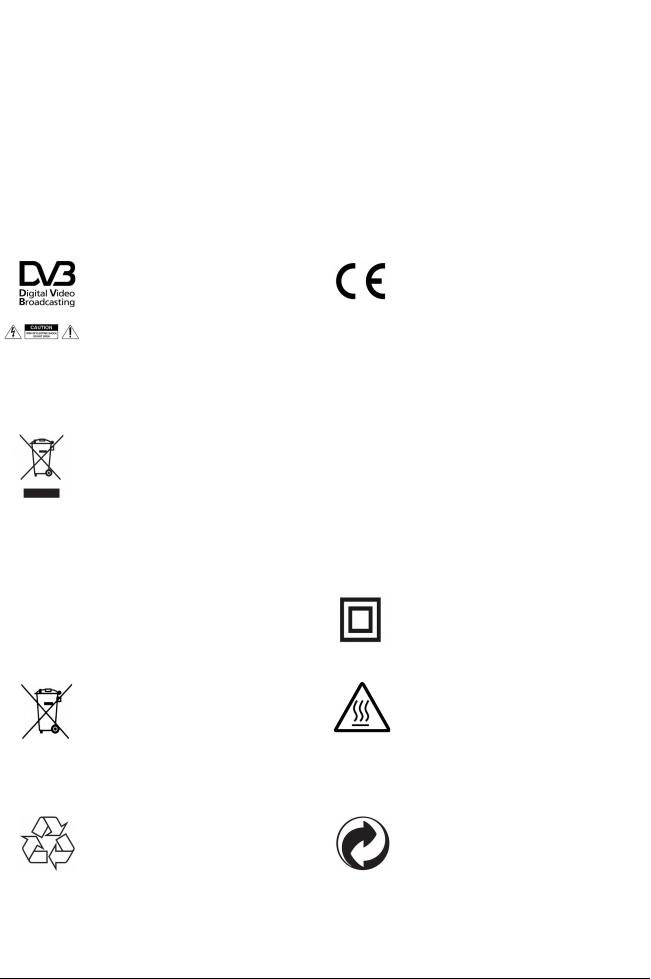
ABOUT THE INSTRUCTION MANUAL
Ferguson Sp. z o.o. has made every effort to provide the most current information about its products. Ferguson Sp. z o.o. does not grant any guarantee as to the contents of the present instruction manual and disclaims any implied guarantees concerning market value or suitability for specific purposes. The information contained herein is an instruction intended to enable the correct usage and maintenance of the receiver.
Ferguson Sp. z o.o. reserves itself the right to introduce amendments, changes or translations of the instruction manual without prior notification thereof. For this reason, we recommend you regularly visit our website in order to obtain the latest information.
MARKINGS AND SIGNS APPLIED TO THE RECEIVER
Digital signal transmission logo. This logo informs that the receiver conforms to the Digital Video Broadcasting standards.
Risk of electric shock - do not open. This notice warns the user not to open the receiver housing. The housing may be opened solely by authorized service technicians.
CE logo.
The logo informs that the receiver conforms to the terms and conditions of Directive 2004/108/EC concerning observance by Member States of provisions regulating electromagnetic compatibility, and to the terms and conditions of Directives 2006/95/EC concerning observance by Member States of provisions regulating low voltage electricity and safety with relation to the handling and operation of electrical equipment.
When this crossed-out wheeled bin |
R&TTE |
Hereby Ferguson Sp. z o.o., declares |
symbol is attached to a product it |
|
that the device is in compliance with |
means that the product is covered by |
|
the essential requirements and other |
the European Directive 2002/96/EC. |
|
relevant provisions of Directive 1999/5/EC. |
Please inform yourself about the local |
|
You can find the Declaration of Conformity |
separate collection system for electrical |
|
on www.deklaracje.ferguson.pl |
and electronic products. |
|
This product has been designed, tested |
|
|
|
Please act according to your local rules |
|
and |
and do not dispose of your old products |
|
manufactured according the European |
with your normal household waste. |
|
R&TTE directive 1999/5/EC. |
Correct disposal of your old product |
|
Double insulation logo. |
helps to prevent potential negative |
|
|
|
This logo informs that the receiver is an |
|
consequences for the environment and |
|
|
|
electrically safe device, provided that it is |
|
human health. |
|
|
|
used in accordance with the |
|
|
|
|
|
|
recommendations set forward in the |
|
|
chapter concerning safety. |
Your product contains batteries covered by the European Directive 2006/66/EC, which cannot be disposed with normal household waste. Please inform yourself about the local rules on separate collection of batteries because correct disposal helps to prevent negative consequences for the environmental and human health.
Hot surface mark
CAUTION: HOT SURFACE. DO NOT TOUCH. The top surface over the internal heat sink may become hot when operating this product continuously. Do not touch hot areas, especially around the “Hot surface mark” and the top panel.
Your product is designed and manufactured with high quality materials and components, which can be recycled and reused.
When this logo is attached to a product, it means a financial contribution has been paid to the associated national recovery and recycling system.
4

BASIC INFORMATION ABOUT THE RECEIVER
1.Main features
Reception of high definition channels
Scaling of PAL signals to a resolution of 720p or 1080p
Availability of programmable timers
Separate lists of favourite, TV and Radio channels
Quick channel search function (QuickFind)
Teletext and on-screen captions
DiSEqC 1.0, 1.1 and DiSEqC 1.2, USALS
MPEG-2, MPEG-4, MPEG-4 AVC/H.264 standards
Compatible with DVB-S2, DVB-S, DVB-T2 and DVB-T systems (depending on model)
Card reader for pay-per-view television
Common Interface (depending on model)
2.Contents of box
Unpack the receiver and check whether all of the following elements are present
1 x remote control unit
1 x instruction manual
1 x receiver
3.Important instructions concerning handling of the receiver
The screen menu (OSD) simplifies operation of the receiver and has made it possible to reduce the number of keys on the remote control. All of the functions are displayed on the screen and may be controlled by means of a small number of keys. Common functions have been connected in one "MENU". The selected function is coloured. Depending on the selected option, various "function keys" are displayed: red, yellow, green, blue and white in the form of graphics and descriptions. The colours represent various functions in individual "Menus". The selected function is activated by pressing a key on the remote control unit. The so-called function keys are active only when in the appropriate field there is information about it. The user interface makes it possible to navigate within a menu and between functions in a number of different ways. Certain buttons on the remote control allow direct access to functions. The buttons are multi-functional, i.e. their functions depend on previously activated elements.
NOTE:
Please keep in mind that new software may change the functionality of the receiver. Photographs and descriptions included in the instruction manual are for informational purposes only. If you should notice an error, please report it - we shall make every effort to have it rectified.
5

4. Remote control
Due to the standardization of Ferguson equipment, the majority of these devices use the same remote control unit RCU540 or RCU650. This means that not all keys are used by this equipment model!
|
52E |
102mini |
102E |
202E |
150Combo |
250Combo |
|
103 |
203 |
152Combo |
252Combo |
||
|
|
|
||||
|
|
|
|
|
|
|
RCU |
540 |
540 |
540 |
540 |
540 |
650 |
|
|
|
|
|
|
|
Turns the receiver on and sets it in standby mode.
|
Switches the sound on and off. |
|
|
back |
Returns to the previous submenu, or exits the menu. |
|
Returns to the previously displayed channel. |
guide |
Displays the electronic programme guide. |
|
|
menu |
Displays the main menu on-screen. |
F1 |
Switching between the list of television and radio programmes. |
F2 |
Changes the active satellite for the channel list. |
F3 |
Used to switch between the resolution selected in the menu and the |
|
default resolution of 576i. Allows the user to restore proper |
|
functioning of the receiver following the selection of a resolution not |
|
supported by the television. |
F4 |
Returns to the previously displayed channel. |
|
|
pvr |
Displays the USB menu, if a USB memory device has been |
|
connected. |
fav |
Displays a selection of favorite channel lists. |
|
Used to change the volume level (lower, higher). |
Switches to the next or previous channel.
info |
Displays information about the current programme. |
|
text |
Switches on the teletext on-screen, if this is available. |
|
|
|
|
audio |
Switching between soundtrack versions, if these are available. |
|
|
|
|
sub |
Switches the on-screen captions on and off, if these are available. |
|
|
|
|
find |
A quick search for channels according to successive name letters. |
|
|
|
|
edit |
Not used. |
|
ratio |
Change the aspect ratio of 16:9, 4:3, |
etc.. |
|
Buttons used to operate the recording, |
playback and time shift |
|
mode functions. |
|
|
|
|
6
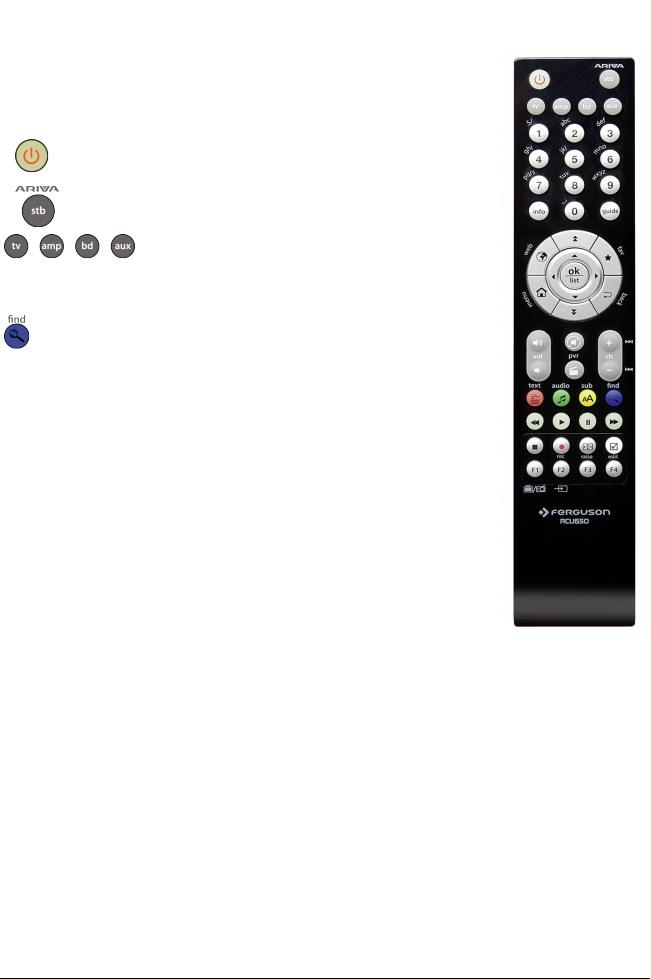
RCU650
RCU650 is 5 in 1 universal remote control is suitable for TV sets, A/V receivers, tuners, BD/DVD players, CD players, DVR players, various STBs (satellite, cable, terrestrial, IPTV), amplifiers and other devices from common manufacturers. The universal remote control can execute basic device functions.
|
|
|
|
Power button turns on the device or sets it in standby |
|
|
|
|
mode. |
|
|
|
|
Blue LED flashes to show that button is pressed. |
|
|
|
|
Predefined stb button for Ferguson Ariva STBs. It is not |
|
|
|
|
possible to setup another code set or use learning |
|
|
|
|
function. |
|
|
|
|
|
|
|
|
|
Device buttons can be used for device of your choice. You |
|
|
|
|
can setup any code set and/or use learning function. |
1, |
2, |
3, |
4, 5, 6, 7, |
Select particular channel number on a channel list. |
8, |
9, |
0 |
|
Enter numeric values. |
|
|
|
|
enter the device code during set up |
|
|
|
|
|
|
|
|
|
Learn a new code from original remote control |
|
|
|
|
|
WEB |
|
|
Direct access to internet services offered by receiver. |
|
|
|
|
|
|
To make your remote control ready for use, you need to carry out one of the following steps:
Set up device via auto search
1.Switch on the device that you like to control.
2.Point the remote control at your device. Press and hold down the device button (e.g. TV) for 5 seconds. The LED turns on and after a moment LED start flashing, that means RCU650 is in auto search mode and you can release device button.
3.The “Volume+” signal is automatically transmitted from the remote control to the device (code scan). As soon as the volume of the device
(e.g. TV) changes, immediately press device button to stop the auto search.
If the device you are searching for is a CD player, Tuner, TAPE, or AUX then “Power”
(instead of “Volume+”) signal is automatically transmitted from the remote control to the device. As soon as the device turns off, press device key to stop the search. You need to turn on the device by Power button before you check other button function.
4.Check the function of the other buttons on the remote control. If none of the buttons function (i.e. the search was not be stopped in time) or the majority of the buttons do not function correctly, restart the search (see steps 2 to 4) to find a suitable code. If the majority of the buttons function correctly, setup has been successful. Re-press the device button (e.g. TV) to save the code and to terminate the set-up mode.
Note:
•Entering the auto searching mode, it will search forward from the current code.
•Sometimes, remote control does not work properly just because auto search was not stopped in time. In this case, just enter into manual search again, and press Vol– button approx. every 1.5 seconds to search backward the code database.
•If you are not satisfied with certain buttons assignments, or some functions are missing, then you can use additionally learning function.
7

Setup device via brand name code
1.Switch on the device that you like to control.
2.Find the code number of your device brand in the code list (e.g. Ferguson 1244) from the relevant device group (e.g. DVB-T).
3.Press and hold the device button (e.g. AUX) for three seconds. Release the device button as soon as LED lights up, now it is in set up mode.
4.Enter the 4-digit device code (e.g. 1244 for Ferguson DVB-T) within 10 seconds. If an entry is not made within 10 seconds, the setup mode is automatically terminated.
5.The LED turns off if the remote accepts the code. If the LED flashes three times, that means the code may be wrong, and the remote control remains in set-up mode, enter the correct code from the list again in good time.
6.Check the function of the buttons on remote control. If it does not function correctly, try another 4-digit device code from the list under the same brand. Repeat steps 3 to 6 until all the basic functions operate correctly.
7.Exit the set-up mode by pressing the device button.
Note:
•If you are not satisfied with certain buttons assignments, or some functions are missing, then you can use additionaly learning function.
•mode is automatically terminated if no button is pressed for 10 seconds.
Setup device via manual search
1.Switch on the device that you like to control.
2.Point the remote control at the device. Press and hold down the device button (e.g. TV) for 3 seconds. The LED lights up and the remote is in manual set-up mode, release the device button now.
3.Press the Vol+ button approx. every 1.5 seconds.
4.As soon as the volume of the device (e.g. TV) changes or the device turns off, check whether the other buttons on the remote control function correctly. If the majority of the buttons does not function correctly, press the Vol+ approx. every 1.5 seconds to initiate the reactive code (manual search is continued, see steps 3 to 4).
5.If the majority of the buttons on the remote control functions correctly, save the code by pressing the device button (e.g. TV) to terminate the manual search.
Note:
•If you are not satisfied with certain buttons assignments, or some functions are missing, then you can use additionaly learning function.
•Sometimes, remote control does not work properly just because manual search was not stopped in time. In this case, just enter into manual search again, and press Vol– button approx. every 1.5 seconds to search backward the code database.
•The Manual Search is automatically terminated if no entry occurs during 30 seconds period.
•Manual search mode, search forward from the current code.
Learning Function
The learning function is used to extend the pre-programmed codes. The standard code list already provides you with the most important functions, but it is possible to add a few additional functions. A fully functional original remote control is required for learning programming.
Please use fresh batteries for both the Learning Remote Control and the Original Remote Control.
8

1.Press down and hold the device button which you wanted to learn (e.g. BD player), and press find button at the same time, when LED turns on then release the both pressed keys, now remote control is in learning mode for BD codes.
2.Point the IR transmitter of the original remote control remotes face to the IR receiver of your RCU650 remote by approximately 30 mm apart. Keep two remotes at the same straight line to make the learning process more accurate.
3.Press and release the target button on your RCU650 remote control which you want to learn (e.g. info), the LED starts to flash.
4.Press the one button (For example, info button) from your original remote control, when you see LED on new universal remote control flashes three times and stop, it means RCU650 has accepted new code and now you can start to learn another new code from original remote.
5.Repeat step 3 to 4 to learn another code from original remote control.
6.When you finish learning all buttons you want to have, press find button to store all
commands you have learnt from original remote and exit from Learning remote.
Note:
•You can learn limited set of buttons on RCU. Available buttons are shown on the image.
•When you can not choose any more buttons from new universal remote control for learning, it means new remote memory is full (RCU650 has limit for total 60 buttons).
•The learning mode is automatically terminated if no entry occurs during 14 seconds period.
•Press TV button and Number 6 button can delete all codes you have learnt for all devices.
Display device code
1.Press and hold the device button, simultaneously press button 1 to display the thousands of the 4-figure code, Count how often the LED flashes, if the LED does not flash, 1. then the number is zero.
2.Press and hold the device button, simultaneously press button 2 to display the hundreds of the 4-figure code.
3.Press and hold the device button, simultaneously press button 3 to display the tens of the 4-figure code.
4.Press and hold the device button, simultaneously press button 4 to display the ones of the 4-figure code.
For example for code 0169 for TV:
1.Press TV and 1 LED flashes Zero time
2.Press TV and 2 LED flashes One time
3.Press TV and 3 LED flashes Six times
4.Press TV and 4 LED flashes Nine times
Reset / Delete Function
Just simply press TV button and Button 0 together, when LED flashes three times, now all settings will be deleted, and remote go back to factory default settings.
9
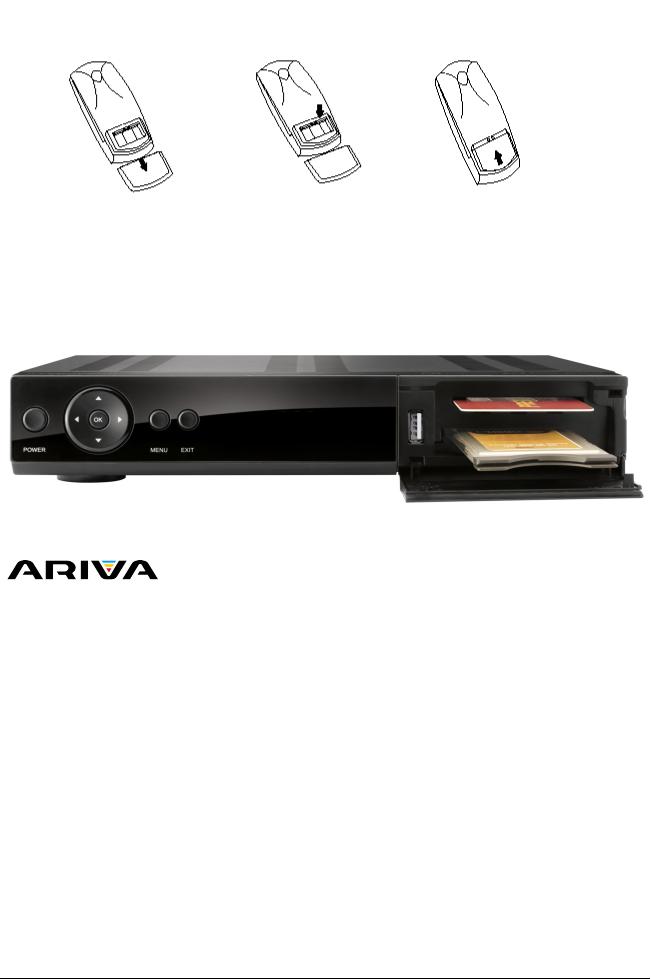
4.1 Installation of batteries
Remove the cover of the battery compartment on the rear panel of the remote control unit; slide it downwards and put it aside. Insert two AAA (R03) batteries into the compartment, observing the indicated polarity. Do not mix old and new batteries, or batteries of different types. Replace the battery compartment cover. Slide it upwards until it locks in place.
5. Front panel
*illustrative photo
|
52E |
102mini |
102E |
202E |
150Combo |
250Combo |
|
103 |
203 |
152Combo |
252Combo |
||
|
|
|
||||
|
|
|
|
|
|
|
POWER |
- |
- |
|
|
|
|
|
|
|
|
|
|
|
|
|
- |
|
|
|
|
|
|
|
|
|
|
|
|
|
- |
|
|
|
|
|
|
|
|
|
|
|
OK |
|
- |
|
|
|
|
|
|
|
|
|
|
|
MENU |
|
- |
|
|
|
|
|
|
|
|
|
|
|
BACK |
|
- |
|
|
|
|
|
|
|
|
|
|
|
CA |
- |
1 |
1 |
1 |
1 |
1 |
|
|
|
|
|
|
|
CI |
- |
- |
- |
1 |
- |
1 |
|
|
|
|
|
|
|
 CA: Socket for a subscriber's card – always insert with the chip facing down!
CA: Socket for a subscriber's card – always insert with the chip facing down!
10
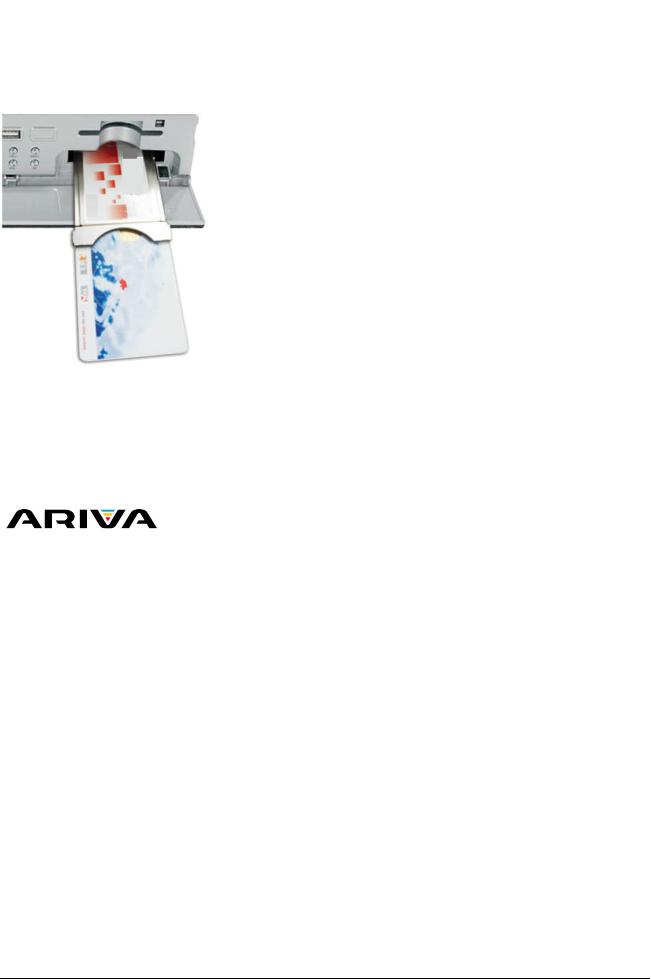
5.1. CAM module and subscriber's card
Inserting the module and subscriber's card
The conditional access module resembles a PC card (known as the PCMCIA) for laptop computers. There are different types of CI modules, suitable for various encoding systems.
1.First, turn off the receiver.
2.Insert the subscriber's card into the conditional access module.
3.Open the tab on the front panel and insert the CI CAM module, forcing it home into the socket on the right side of the front panel. If you want to remove the CAM module, press the black button next to the CAM socket.
4.After correctly inserting the module, turn on the receiver. From now on you will be able to watch coded television channels available through this module and card.
Note: Check whether the subscriber's card has been correctly inserted into the module. Incorrect insertion of the card may cause damage to the conditional access module.
Warning: Do not attempt to remove or insert the module and/or card when the receiver is turned on!!!
6. Rear panel
Depending on your receiver has inputs / outputs as shown below:
|
52E |
102mini |
102E / |
202E / |
150Combo |
250Combo |
|
103 |
203 |
152Combo |
252Combo |
||
|
|
|
||||
|
|
|
|
|
|
|
LNB IN |
|
|
/ |
/ |
|
|
|
|
|
|
|
|
|
LNB-OUT |
- |
- |
/ |
/- |
|
|
|
|
|
|
|
|
|
ANT IN |
- |
- |
-/- |
-/- |
|
|
|
|
|
|
|
|
|
LOOP-OUT |
- |
- |
-/- |
-/- |
|
|
|
|
|
|
|
|
|
HDMI |
|
|
/ |
/ |
|
|
|
|
|
|
|
|
|
LAN |
- |
|
/ |
/ |
|
|
|
|
|
|
|
|
|
USB |
1 |
1 |
1/2 |
2/2 |
2 |
2 |
|
|
|
|
|
|
|
SCART |
|
- |
/ |
/ |
|
|
|
|
|
|
|
|
|
2x RCA analog audio |
- |
- |
/- |
/- |
|
|
|
|
|
|
|
|
|
1 x RCA video (cvbs) |
- |
- |
-/- |
/- |
- |
- |
|
|
|
|
|
|
|
1 x SPDIF |
|
- |
/ |
/- |
- |
- |
|
|
|
|
|
|
|
1 x OPTICAL |
- |
- |
-/- |
-/ |
|
|
|
|
|
|
|
|
|
RS232 |
|
|
/ |
/ |
|
|
|
|
|
|
|
|
|
ON/OFF power button |
- |
- |
/- |
/- |
|
|
|
|
|
|
|
|
|
11

7. Connecting the satellite antenna
In order to check the correctness of connection of external equipment, for example a satellite antenna or converter, read the installation manual or hire a professional technician!
Good reception is conditional on the precise placement of the antenna. Even the best antenna will cause reception problems if it is incorrectly adjusted. Even slight placement errors may render reception impossible or considerably impair image/sound quality. Before installation make sure that the location is suitable. The proper direction may be initially determined by making a comparison with other antennas. There should be no objects directly in front of the antenna, for these may block the signal from reaching the bowl! Once you select an optimal location for the antenna, fix and adjust it initially, and then proceed to a precise adjustment. Each antenna is fitted with regulating screws that make it possible to correct its vertical and horizontal placement.
Adjusting is somewhat more difficult in the case of digital tuners. You cannot perform adjustments on the basis of the image, because this appears with a certain delay. What is more, the indicators available in the settings menu also act with a delay, and therefore adjustment may take considerable time and be very imprecise. An antenna signal meter will be indispensable for setting up the antenna. The meter must be connected to the antenna cable between the converter and the receiver. This will confirm the presence of a voltage that switches the converter from the tuner and show the signal strength for individual satellites. We strongly recommend hiring a professional technician!
7.1 Connecting an antenna system with a positioner
USALS type positioners manufactured by Stab will guarantee the correct operation of your Ferguson receiver. In order to connect an antenna system to a USALS positioner, you should connect the positioner out to the LNB IN of the Ferguson receiver. The role of the positioner installed between the mast and the antenna is to turn the bowl in such a way as to ensure that it is directed to various satellite positions.
The USALS function considerably simplifies configuration of the antenna. The Ferguson receiver requires that you enter the geographical coordinates of the antenna in order to automatically calculate the angle of revolution of the motor for individual satellites. The receiver activates the positioner automatically and turns the antenna to the selected satellite. When a signal is locked on, you should precisely adjust the antenna's elevation and azimuth settings in order to optimise signal reception. When correcting the azimuth, the entire antenna
assembly and positioner revolve with respect to the mast. If initially the antenna was not directed precisely south, you can correct this now. When you have finished with the first satellite, all other satellites will be remembered automatically, provided that you have introduced their satellite position values correctly.
Without the USALS function, programming of the system is much more difficult. To this end you should use the DiSEqC 1.2 function, which turns the antenna to the selected satellite in a nearly identical manner. Since, however, it does not take into consideration the local geographical coordinates, the movement is effected on the basis of the prime meridian and the equator. Therefore it is necessary to introduce corrections separately for each satellite. Due to these difficulties, manufacturers of DiSEqC 1.2 positioners frequently provide useful software on their websites, using which you can easily calculate the location of the satellite.
8. Connecting the terrestrial antenna (Combo models only)
There are no special antennas for DVB-T. For collection of digital television, the same antennas as analog TV reception. There is no need to change the antenna system. It is worth to check the quality and condition of the plant, which has so far been used for analog TV reception. Reception problems can be weathered with old antenna systems, or grid antennas. It is recommended to use directional antennas with signal amplifier, depending on the particular situation you may also establish impedance transformer. Indoor antenna may be used only in areas with high signal intensity.
12
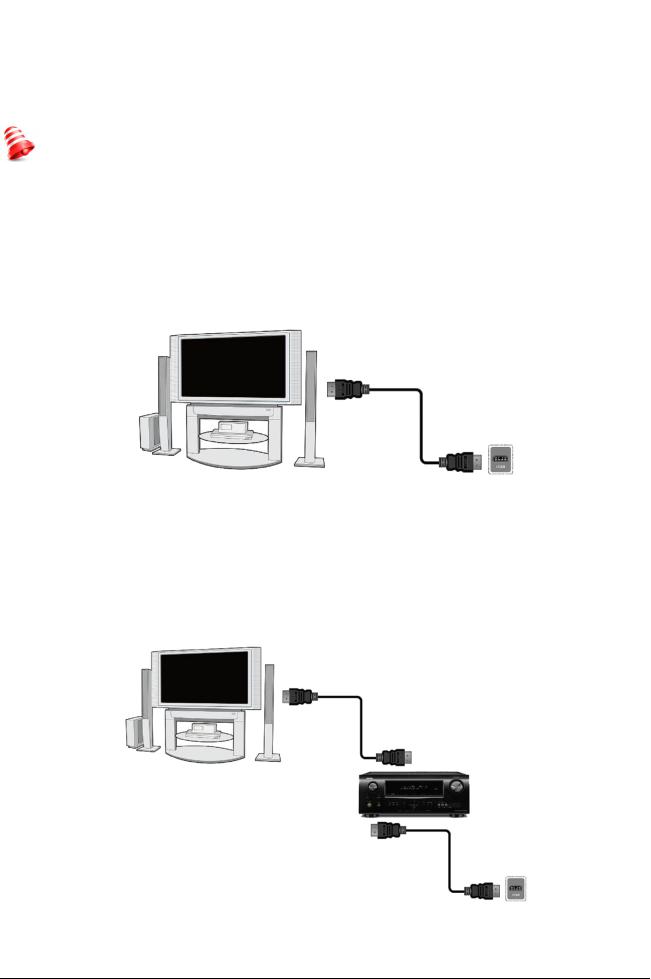
9. Connecting the receiver
The following illustrations show cable connections for a television and other devices connected with the receiver. If you require any assistance in connecting individual devices, contact your local technician. Before connecting or altering cabling, disconnect the receiver from the mains !!!
Note: Availability and type of connection depends on your receiver model! Not all of the connections are applicable for your receiver!
9.1Connection by means of an HDMI cable (recommended)
1.Connect the antenna to the LNB IN socket of the receiver.
2.Connect the HDMI to the receiver out and the television in.
Connection by means of an HDMI cable allows you to obtain the highest image quality.
|
If you have an amplifier with an HDMI out and in, which supports sound sent over |
HDMI, |
connect the devices by two HDMI cables. As in the following figure: one cable to |
the |
amplifier, and the other from the amplifier to the television set. |
13
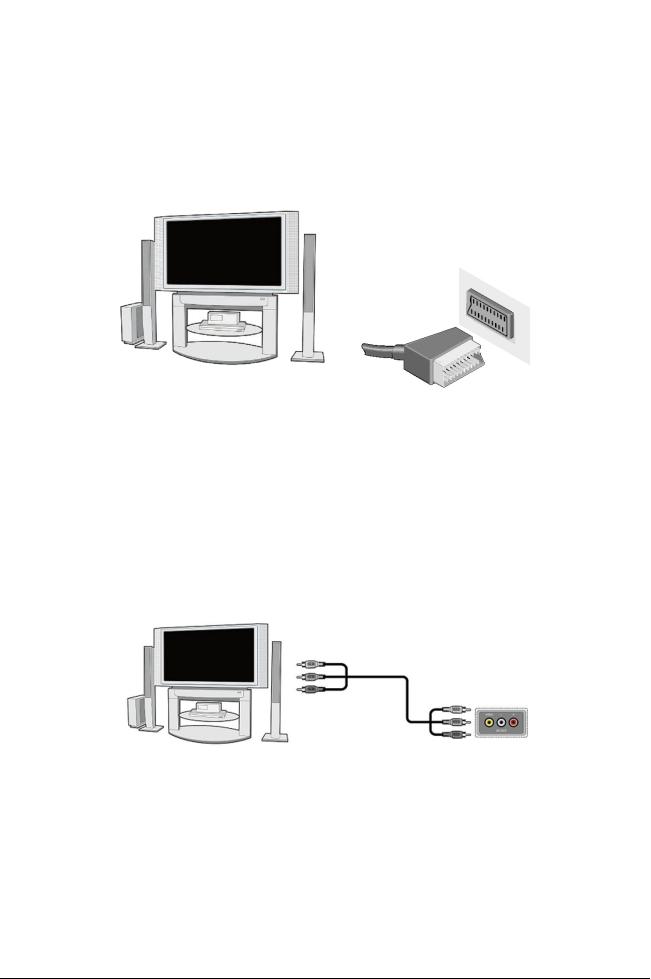
9.2Connection by means of SCART cables
1.Connect the antenna to the LBN IN socket of the receiver.
2.Connect the television to the port in accordance with the description. We recommend using shielded SCART cables.
9.3Connect composite port
1.Connect LNB IN port on a receiver to a satellite dish.
2.Connect the video and audio by means of three cinch cables to the television set. One cable, colored yellow used to send video. The two remaining cable, red and white, are used to connect sound (right and left channel).
14
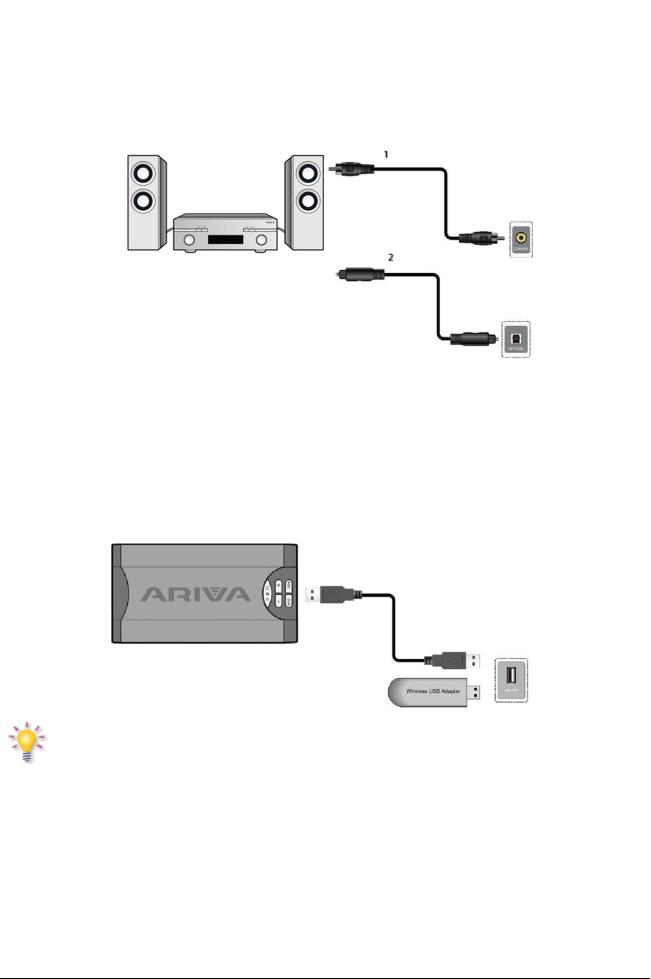
9.4Connection of an audio system
•Digital sound (including surround sound, if broadcast) can be obtained from two sockets: coaxial (1) or optical SPDIF (2).
•Stereo sound may be obtained by connecting cinch cables (white and red) for the left and right channels
9.5 Connection of an external memory
1. The receiver supports all types of hard disk drives in housings that are equipped with an independent power supply. The sole condition is that the hard disk has to have a single basic partition that is formatted in the NTSF (recommended) or FAT32 system.
2.We recommend that you regularly archive data on your PC computer. A large number of files with recordings may slow down cooperation with the receiver (slow loading of the file list).
WiFi is supported only when plugged into the USB port is free WiFi USB adapter based on Ralink chipset Rt5370. Available as a separate accessory.
15
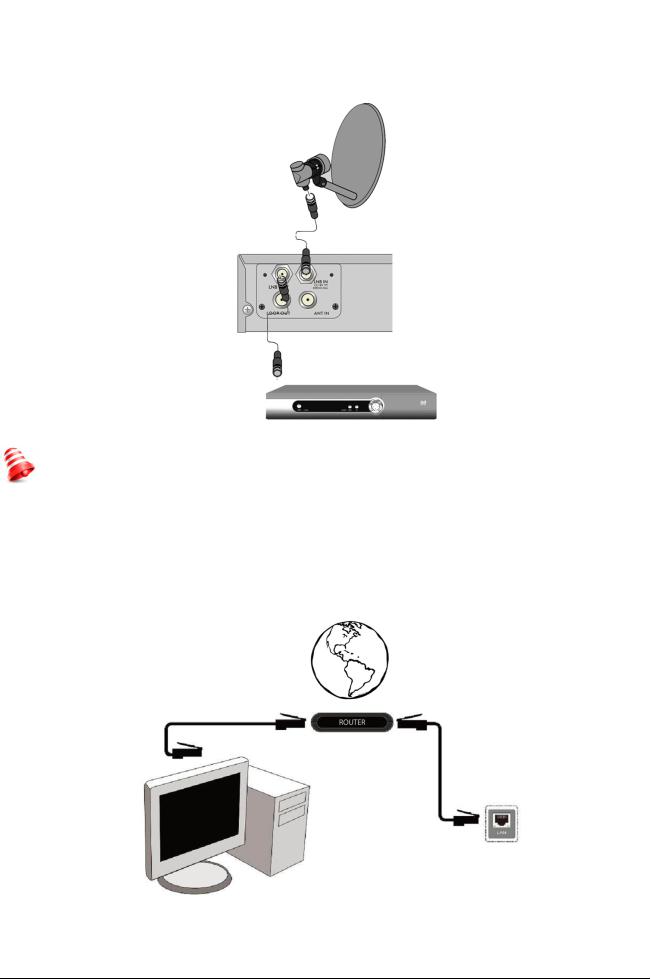
9.6 Connection of another receiver
Another receiver may be connected through the LNB OUT socket. Please keep in mind, however, that only one device may be used at one time! Permanent damage may result if both are turned on simultaneously.
NOTE: LOOP OUT in all Combo receivers is the only signal loop-through. This is not a modulator, so the receiver will not let go of the image decoding (DVB-T and USB) in the form of an analog signal on this connector.
9.7 Connection to the LAN local network
In order to connect the receiver to a local network, use an RJ45 cable. We recommend that you restart the receiver whenever the network settings are changed.
16
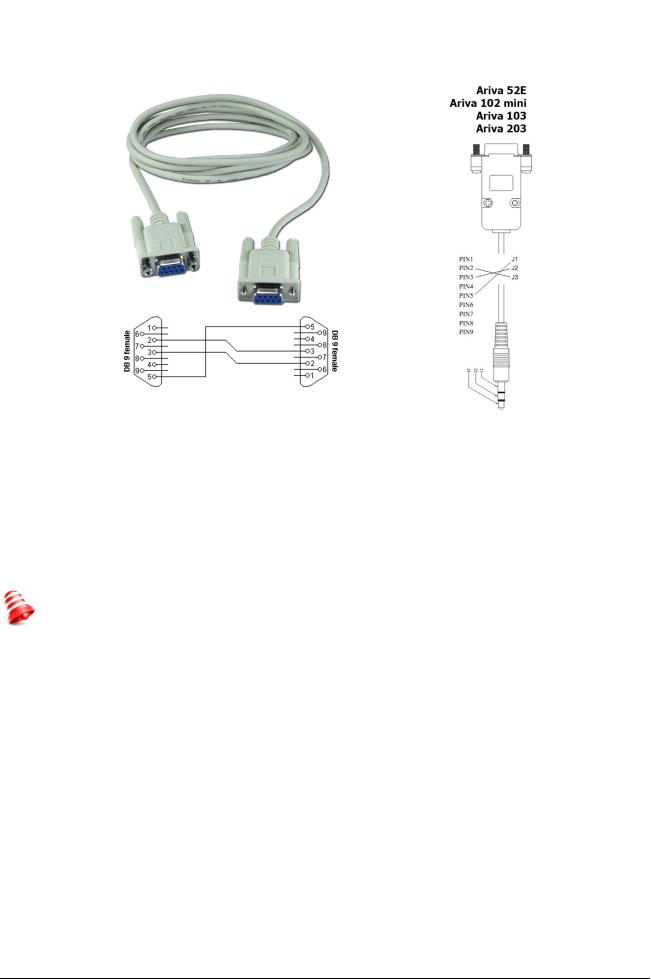
9.8 Connection to the computer by means of an RS232 Null Modem cable
For connection to a computer, use a Null Modem cable.
FIRST STEPS
1.Insert the plug of the receiver and other additional devices to a wall socket.
2.Select AV signal source of your television set.
3.The satellite receiver is supplied with reinstalled television channels. In order to watch other, i.e. non-default channels, you should use channel search function.
Note: check all of the connections, i.e. antenna cables, audio and video signal cables, before connecting the receiver to the mains!
INFORMATION ABOUT THE USER MENU
The user interface allows you to use numerous settings and receiver functions. Some buttons on the remote control unit enable direct access to functions of the device. Certain of these buttons have been described, for example Guide, MENU, OK, or coloured for ease of usage. Other buttons are multi-functional and their operation depends on the type of device selected by the user. Hereunder we have presented a brief description of how to use certain device functions available through the user menu.
1.The up/down arrow keys on the remote control are used to move the cursor up and down on the menu.
2.The left/right arrow keys on the remote control are used to move the cursor left and right, and to switch on submenus
3.The OK button is used to enter submenus.
4.The BACK button is used to exit menus or functions.
5.When using a submenu, the OK button is used to confirm your selection; a green background informs that a function is active.
17
